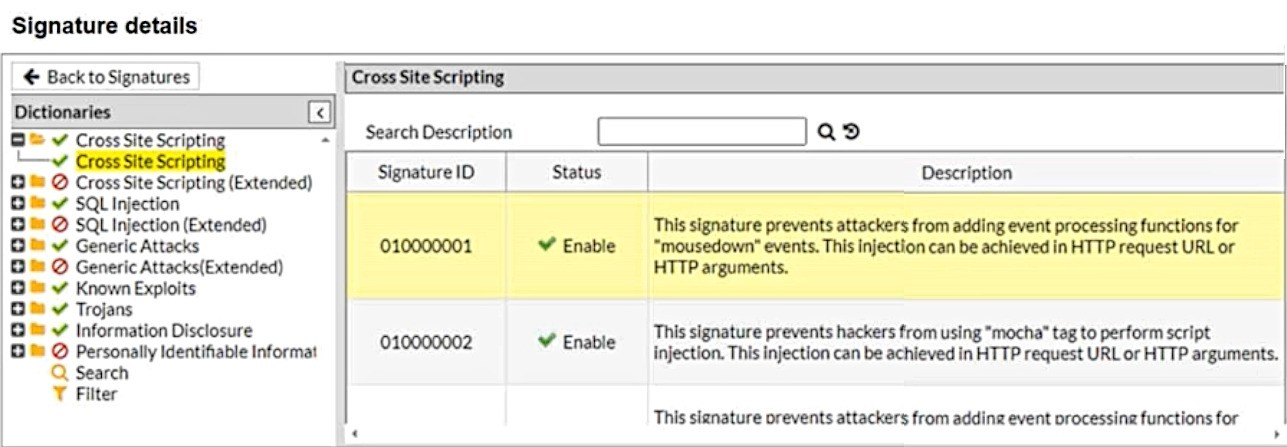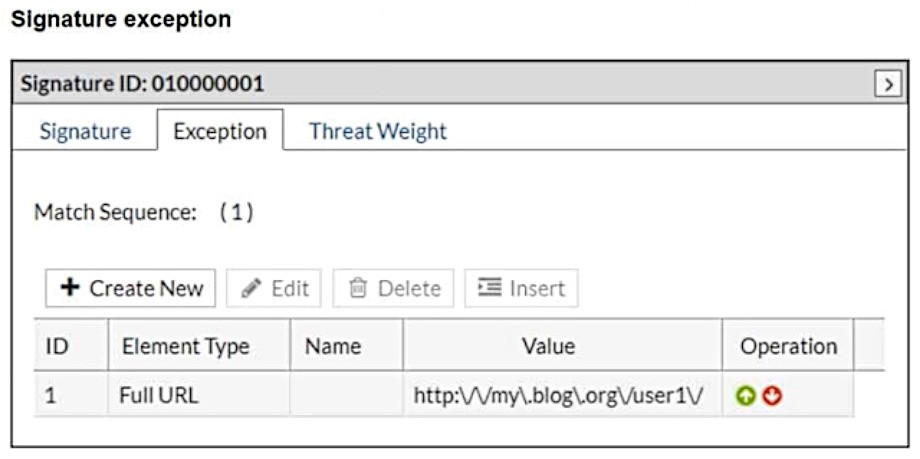Curious about Actual Fortinet Certified Professional (FCP_FWB_AD-7.4) Exam Questions?
Here are sample Fortinet FCP - FortiWeb 7.4 Administrator (FCP_FWB_AD-7.4) Exam questions from real exam. You can get more Fortinet Certified Professional (FCP_FWB_AD-7.4) Exam premium practice questions at TestInsights.
Which would be a reason to implement HTTP rewriting?
Correct : A
HTTP rewriting is a feature in FortiWeb that allows administrators to modify HTTP requests and responses for various purposes, including security enhancements, user experience improvements, and application functionality. One common use case for HTTP rewriting is to redirect HTTP traffic to HTTPS, ensuring that all communications between clients and the server are encrypted and secure.
Explanation of Options:
A . To redirect HTTP to HTTPS: This is a valid reason to implement HTTP rewriting. By rewriting incoming HTTP requests to HTTPS, administrators can enforce secure connections, protecting data integrity and confidentiality. FortiWeb supports this functionality, allowing seamless redirection from HTTP to HTTPS.
B . To implement load balancing: Load balancing is not typically achieved through HTTP rewriting. Instead, it involves distributing network traffic across multiple servers to ensure availability and reliability. FortiWeb provides load balancing features, but these are separate from HTTP rewriting capabilities.
C . To replace a vulnerable element in a requested URL: While HTTP rewriting can modify URLs, its primary purpose is not to replace vulnerable elements within URLs. Addressing vulnerabilities typically involves input validation, sanitization, and other security measures rather than rewriting URLs.
D . The original page has moved to a new URL: This is another valid reason to implement HTTP rewriting. When a webpage's URL changes, rewriting rules can redirect requests from the old URL to the new one, ensuring users can still access the content without encountering errors.
In summary, both options A and D are correct reasons to implement HTTP rewriting. However, in the context of FortiWeb's functionalities, redirecting HTTP to HTTPS (option A) is a common and significant use case, as it enhances security by ensuring encrypted connections.
Start a Discussions
What is the difference between an API gateway protection schema and a machine learning (ML) API protection schema?
Correct : C
In FortiWeb's API protection mechanisms, there are distinctions between the traditional API gateway protection schema and the machine learning (ML) based API protection schema:
Data Type Support: The API gateway protection schema has the capability to support various data types beyond just strings, allowing for more comprehensive validation and enforcement of API schemas.
Schema Adaptability: The ML-based API protection schema is designed to automatically learn and adapt to changes in the API structure without requiring manual intervention from administrators. This dynamic learning process enables FortiWeb to identify and protect against anomalies and potential threats in real-time.
Start a Discussions
Refer to the exhibits.


What will happen when a client attempts a mousedown cross-site scripting (XSS) attack against the site http://my.blog.org/userl1/blog.php and FortiWeb is enforcing the highlighted signature?
Correct : D
In the provided configuration, the signature exception has been set for the URL http://my.blog.org/user1V. This means that any request to this specific URL will bypass the signature ID 01000001, which is designed to block cross-site scripting (XSS) attacks using the mousedown event. As the request comes from the URL http://my.blog.org/userl1/blog.php, which does not match the exception rule for http://my.blog.org/user1V, the attack will be allowed through.
Therefore, the connection will be allowed because the exception rule bypasses protection for the specified URL.
Start a Discussions
Which high availability mode is commonly used to integrate with a traffic distributer like FortiADC?
Correct : C
In Fortinet's high availability (HA) configurations, integrating FortiWeb with a traffic distributor like FortiADC is best achieved using the Active-Active HA mode. This mode allows multiple FortiWeb appliances to operate simultaneously, distributing traffic loads and enhancing both performance and redundancy.
FortiWeb supports several HA modes:
Active-Passive: One appliance actively handles all traffic, while the other remains on standby, ready to take over if the active unit fails.
Active-Active: Multiple appliances actively process traffic concurrently, sharing the load and providing redundancy.
High Volume Active-Active: An enhanced version of Active-Active, designed for environments with exceptionally high traffic volumes.
When integrating with a traffic distributor like FortiADC, the Active-Active mode is particularly advantageous. FortiADC can intelligently distribute incoming traffic across multiple active FortiWeb appliances, optimizing resource utilization and ensuring high availability. This setup not only balances the load but also provides fault tolerance; if one appliance becomes unavailable, FortiADC can redirect traffic to the remaining active units without service interruption.
This collaborative approach between FortiWeb and FortiADC ensures that web applications remain secure, performant, and resilient against failures.
Start a Discussions
A customer wants to be able to index your websites for search and advertisement purposes.
What is the easiest way to allow this on a FortiWeb?
Correct : A
The easiest way to allow a search engine indexer (such as Googlebot or Bingbot) to index your website on a FortiWeb is to add the indexer's IP address to the trusted IP list. This ensures that traffic from trusted indexers is allowed through without being blocked or interfered with by FortiWeb's security features like bot protection.
Start a Discussions
Total 36 questions